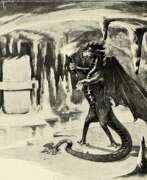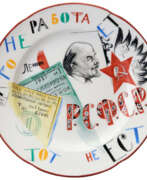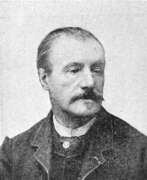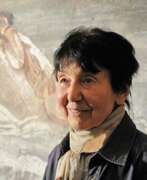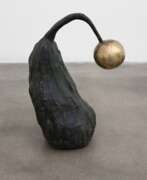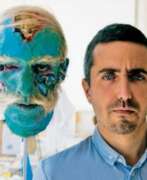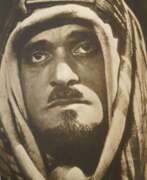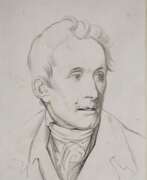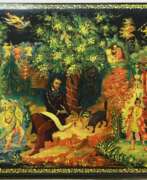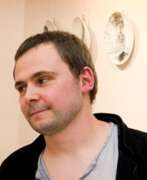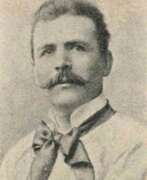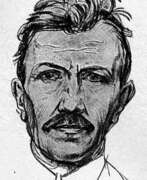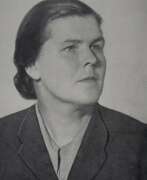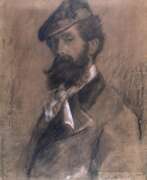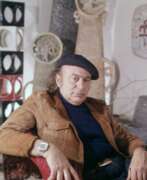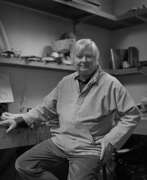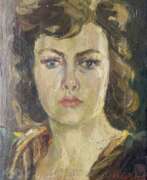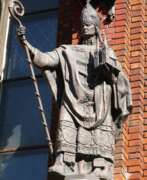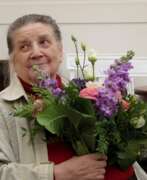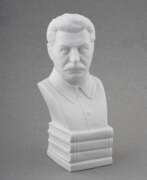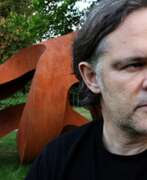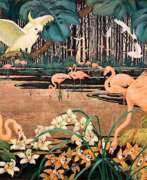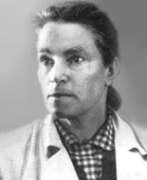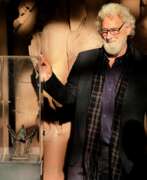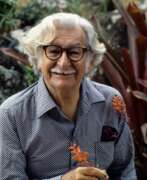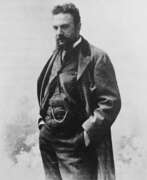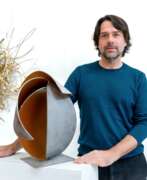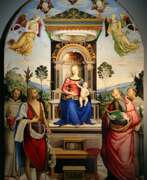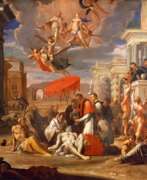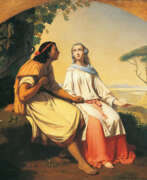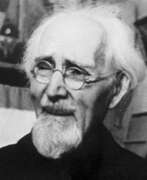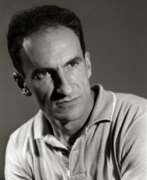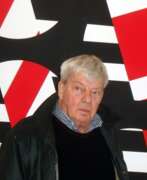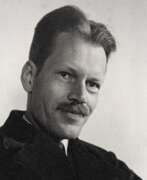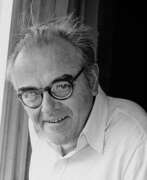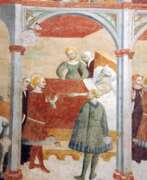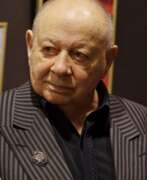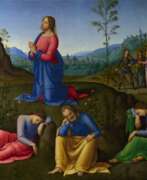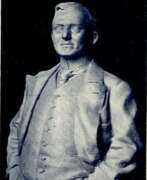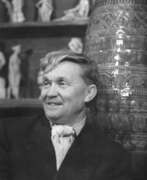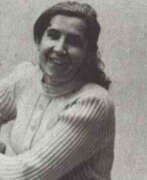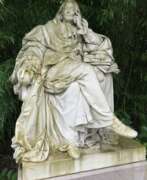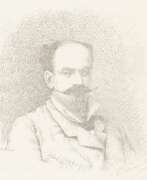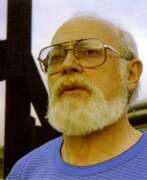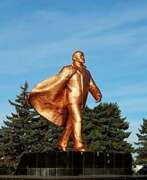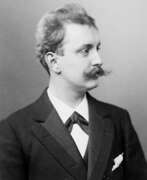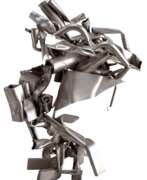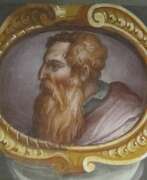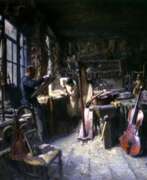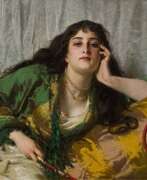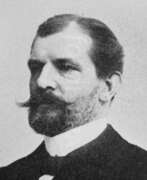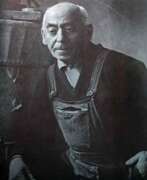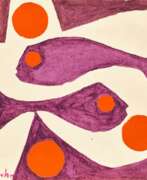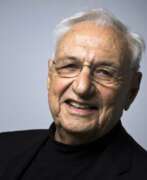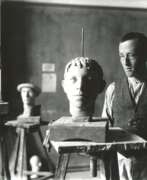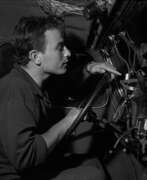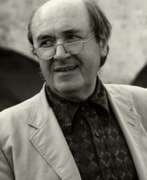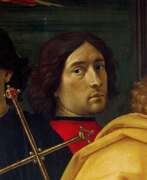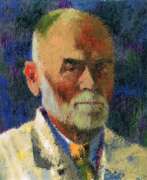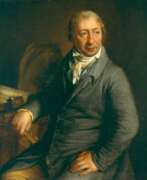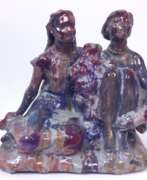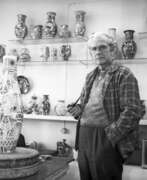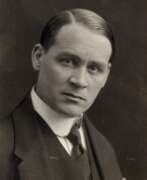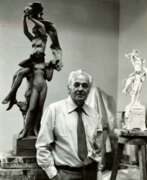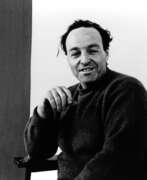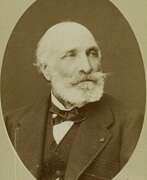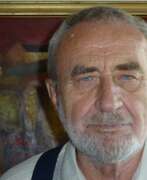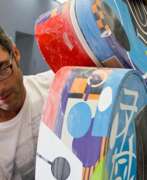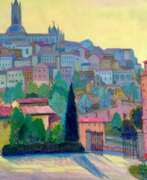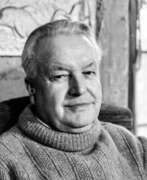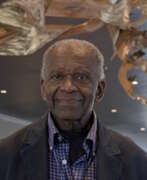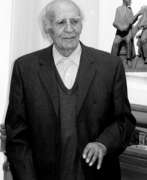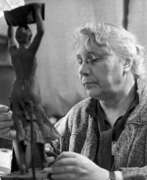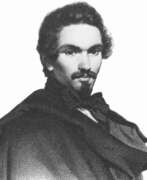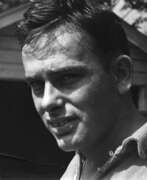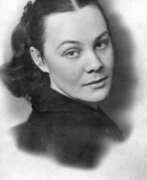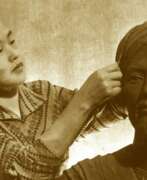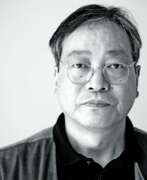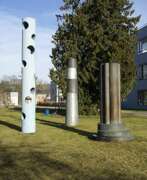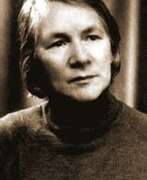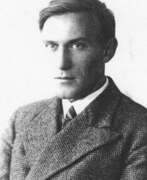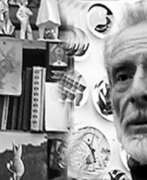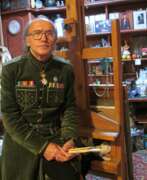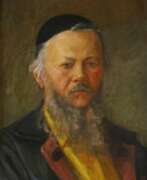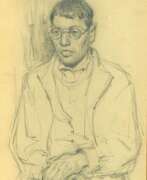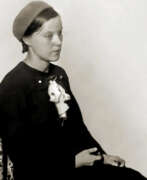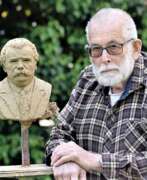Monumentalists
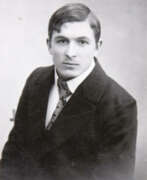

Wäinö Waldemar Aaltonen was a Finnish artist and sculptor, celebrated for his contributions to the cultural landscape of Finland, particularly during the early years of the nation's independence. Born in 1894, Aaltonen's works are distinguished by their nationalist themes and monumental scale, often reflecting the spirit and identity of Finland. His artistic journey was notably influenced by a trip to Italy in 1923, where he encountered cubist and futurist art, elements of which he integrated into his own work.
Aaltonen's sculptures are key features in Finland's public spaces, including the well-known statues in the House of Parliament and numerous works in Turku, such as the "Lily of Turku" and a statue of the runner Paavo Nurmi. His mastery is also showcased at the Wäinö Aaltonen Museum of Art in Turku, which houses a significant collection of his sculptures, paintings, and drawings. This museum not only celebrates his legacy but also serves as a central repository for his extensive works, donated by Aaltonen himself.
For those interested in exploring Aaltonen's work and the impact of Finnish sculpture, a visit to the Wäinö Aaltonen Museum of Art is invaluable. The museum provides a comprehensive view of his artistic evolution and contributions to Finnish art. For updates on exhibitions and events related to Wäinö Aaltonen, consider signing up for notifications through the museum's mailing list, ensuring you stay informed about new insights and offerings related to this pivotal artist.
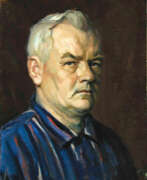

Ivan Osipovich Akhremchik (Russian: Ива́н О́сипович Ахре́мчик) was a twentieth-century Belarusian Soviet artist. He is known as a painter and teacher.
Ivan Akhremchik worked in the genres of portrait, thematic painting, landscape and monumental art. He was one of the first Belarusian artists turned in his work to the theme of the establishment of Soviet power and socialist construction in Belarus. As a muralist, the artist participated in the creation of several pictorial panels for exhibitions and cultural institutions of Belarus.
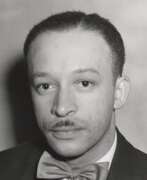

Charles Henry Alston was a mid-twentieth-century American artist. He is known as a graphic and muralist painter as well as a sculptor, illustrator, and educator who lived and worked in New York City's Harlem neighborhood.
Charles Alston was an activist in the so-called "Harlem Renaissance." He became the first African-American director of the U.S. Federal Art Project. The artist created murals for Harlem Hospital as well as a number of cultural and administrative buildings in New York City. Alston is the author of a bust of Martin Luther King, Jr. which was the first depiction of an African American to be displayed at the White House in Washington, DC.
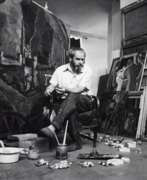

Nikolai Ivanovich Andronov (Russian: Николай Иванович Андронов) was a Soviet artist of the second half of the twentieth century. He is known as a painter, muralist and teacher, considered one of the founders of the "severe style" in the art of the USSR.
Nikolai Andronov actively worked to liberalize the Soviet art scene. At the beginning of his career, he created thematic paintings, later focusing on landscapes. The artist was also involved in the decoration of buildings, including the clubhouse of the Soviet Embassy in the United States, the Paveletsky Railway Station and subway stations in Moscow. From 1992, he taught at the Surikov Moscow Art Institute and headed the composition department.
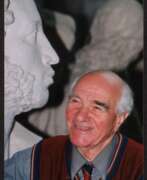

Mikhail Konstantinovich Anikushin (Russian: Михаил Константинович Аникушин) was a Soviet and Russian sculptor, celebrated for his monumental works that have left a lasting legacy in the art world. Born on September 19, 1917, in Moscow, Anikushin's sculptures are a testament to his profound skill and dedication to depicting historical and cultural figures with a dynamic expressiveness that brought them to life. His most notable works include monuments dedicated to Alexander Pushkin, found at the Pushkinskaya Station of the Saint Petersburg Metro and Arts Square in Saint Petersburg, as well as a monument to Vladimir Lenin at Moskovskaya Square in Saint Petersburg.
Anikushin's career was distinguished not only by his artistic achievements but also by the honors he received, reflecting the impact of his work on Russian culture. He was awarded the title of "Honored Artist of the RSFSR" in 1957, "People's Artist of the USSR" in 1963, and became a full member (academician) of the Russian Academy of Arts in 1962. His dedication to capturing the spirit and essence of his subjects, particularly Alexander Pushkin and Vladimir Lenin, showcases his innovative approach to sculpture, moving beyond traditional standards to depict his subjects in active, dynamic poses.
The Presidential Library collection dedicated to Anikushin commemorates the 100th anniversary of his birth, highlighting his significant contributions to Russian sculpture in the 20th century. Anikushin's works are integral to the aesthetic and cultural landscape of Leningrad (now Saint Petersburg), contributing to the city's historical and artistic identity. The collection also emphasizes his role in the community, including his public service and the enduring influence of his artistic vision on generations to come.
Collectors and experts in art and antiques recognize Mikhail Konstantinovich Anikushin not only for his technical prowess but also for his ability to imbue his sculptures with a sense of movement and emotional depth that resonates with viewers. His works remain landmarks, celebrated both in Russia and internationally, for their contribution to the cultural heritage.
For those interested in exploring the works and legacy of Mikhail Konstantinovich Anikushin further, signing up for updates can provide invaluable insights into new discoveries, exhibitions, and auction events related to this influential sculptor. This subscription is an opportunity to stay informed about the sales and exhibitions that continue to celebrate Anikushin's remarkable contribution to the world of sculpture.
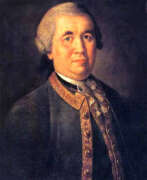

Alexei Petrovich Antropov (Russian: Алексей Петрович Антропов), a prominent Russian painter of the Baroque period, is celebrated for his significant contributions to art, particularly in portrait painting and church frescoing. Born into a family connected to the governmental sphere, Antropov's early exposure to the arts came through his work in the Chancellory of Buildings, where he began his career under the guidance of various Russian and foreign artists, including Andrey Matveyev and Ivan Vishnyakov.
Antropov's work is distinguished by his mastery in oil painting, miniatures, and icons, with a career that saw him active mainly in St. Petersburg, Moscow, and Kiev. His artistic journey was notably influenced by his studies with the French court painter Louis Caravaque and later with the Italian painter Pietro Rotari, which helped him refine his portrait artistry. The 1760s emerged as his most productive period, where he crafted numerous notable portraits, including those of Elizabeth Petrovna and Peter III of Russia, showcasing his preference for traditional icon and parsuna portrait styles characterized by sharp contrasts and dark backgrounds.
Antropov's legacy extends beyond his artworks; his dedication to art education and the community is evident in his decision to transfer his only house to the Department of Education for the establishment of a Free School. He passed away in 1795, leaving behind a rich collection of works that continue to be celebrated in museums such as the Tretyakov Gallery in Moscow and the Russian Museum in St. Petersburg.
Collectors and art experts value Antropov for his unique contributions to Russian art, his role in the transition of portrait styles, and his influence on future generations of artists, including his apprentice Dmitry Levitzky. His works, including the portraits of Catherine II and Archbishop Gavriil Petrov, are pivotal in understanding the artistic and cultural shifts of 18th-century Russia.
For those interested in exploring the depths of Russian Baroque art and the significant figures who shaped its contours, Alexei Petrovich Antropov's oeuvre offers a fascinating journey. Collectors and aficionados are encouraged to sign up for updates on new product sales and auction events related to Antropov's works, ensuring they remain informed about opportunities to own a piece of this illustrious artist's legacy. This subscription is a gateway to the vibrant world of art collection, where the beauty of the past is preserved for the future.
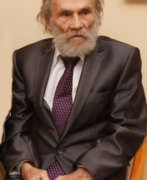

Boris Vladimirovich Arakcheyev (Russian: Борис Владимирович Аракчеев) was a Soviet and Belarusian artist of the second half of the twentieth and early twenty-first centuries. He is known as a painter and teacher.
Boris Arakcheyev worked in easel painting in the genres of landscape, still life, thematic paintings and battle scenes. A series of portraits of contemporaries and famous people occupies a special place in his creative heritage. He also worked in monumental painting - he was one of the creators of the diorama "Minsk Cauldron" in the Museum of the History of the Great Patriotic War of Belarus.
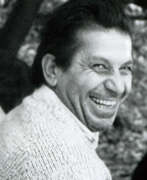

Robert Petrosovich Avakyan (Russian: Роберт Петросович Авакян) was a Soviet and Uzbek artist of the second half of the twentieth and early twenty-first centuries of Armenian origin. He is known as a painter, graphic artist, sculptor and teacher.
Robert Avakyan was trained in painting, but he is most famous as an author of monumental sculptures. He worked actively in Tashkent, participating in numerous exhibitions, including international sculpture competitions. The master also left his mark in such Uzbek cities as Bukhara, Nukus and Yangibazar, where he created significant monumental works.
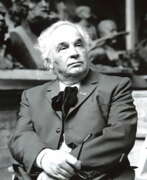

Zair Isaakovich Azgur (Russian: Заир Исаакович Азгур) was a Soviet and Belarusian artist of the twentieth century. He is known as a sculptor, art historian and writer.
Zair Azgur worked in the field of easel and monumental sculpture. He created sculptural portraits of figures of the socialist and revolutionary movement, historical figures, famous masters of culture, as well as monuments. Azgur was an adherent of strict realistic form in art.
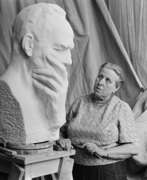

Ekaterina Feodorovna Belashova (Russian: Екатерина Фёдоровна Белашова) was a Russian sculptor renowned for her profound contributions to Soviet sculpture. Born in St. Petersburg in 1906, she later moved to Moscow to further her education and career. Belashova began her artistic journey at VKHUTEIN, studying under notable figures such as R. Bach and A. Matveev. Her career saw her become a revered professor at the Moscow Institute of Applied and Decorative Arts and the Moscow School of Industrial Arts.
Her works, celebrated for their delicate silhouettes and meticulous attention to proportions, delve into the emotional and physical resilience of individuals, particularly during the turbulent times of war. Belashova's sculptures often embody the spirit of her era, exploring themes of loss, hope, and the enduring strength of the human spirit. Notable works include "The Fighter," "Unvanquished," and a series dedicated to the memory of the victims of fascism, showcasing her ability to capture the essence of her subjects with both sensitivity and strength.
Belashova's sculpture, "Girl with a garland in her hair," exemplifies her skill in capturing youth and vitality, showcasing a young girl in a moment of introspection and grace. This piece highlights Belashova's mastery over bronze, a material she often utilized despite its scarcity in the post-war period.
Throughout her life, Belashova remained deeply connected to the art world, not only through her creations but also as an educator and influencer in the Soviet art scene. Her contributions were recognized with numerous awards, including the prestigious State Prize of the USSR. Belashova's legacy is one of artistic excellence and profound humanity, leaving an indelible mark on the world of sculpture.
For collectors and experts in art and antiques, Ekaterina Feodorovna Belashova's work offers a deep dive into the rich tapestry of Soviet-era sculpture, characterized by its emotional depth and aesthetic finesse. Sign up for updates on new product sales and auction events related to Ekaterina Feodorovna Belashova, and explore the enduring beauty of her contributions to the world of art.
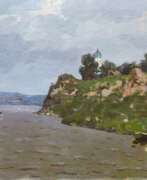

Yakov Tarasovich Besperstov (Russian: Яков Тарасович Бесперстов) was a Russian Soviet artist of the second half of the twentieth century. He is known as a painter, muralist, representative of the Leningrad school of painting.
At the initial stage of his career, Yakov Besperstov worked in the field of monumental and decorative painting, participating in the painting of various buildings. Later he moved to easel painting, creating portraits, genre paintings, as well as urban landscapes. His works were exhibited at exhibitions from the late 1950s and were appreciated by leading artists of Leningrad. The master traveled extensively throughout various regions of Russia and other countries, including France.
His works are in museums and private collections in various countries, including Russia, France, Belgium, Germany, Spain and Italy.
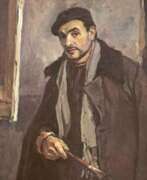

Alexander Alexandrovich Blinkov (Russian: Александр Александрович Блинков) was a Soviet and Russian artist of the twentieth century. He is known as a painter, graphic artist and teacher.
Alexander Blinkov painted genre and battle paintings, portraits, landscapes, animalistics, and also created dioramas and panoramas. Among the famous works of the artist are the paintings "The Taking of Vyborg by Soviet troops", "Partisan Trails", "Kursk Bulge", "Naval Maneuvers", panorama "Defense of Petrograd", diorama "Battle of Stalingrad" and others.
Blinkov actively taught and was associated with the Higher Art and Industrial School in Leningrad. His works are in museums and private collections in Russia, Japan, France, Ukraine, Germany and other countries.
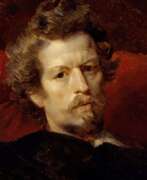

Karl Pavlovich Bryullov (Russian: Карл Па́влович Брюлло́в), a distinguished Russian artist, emerged as a pivotal figure in the world of 19th-century art, blending Western European Romanticism with his Russian heritage to create works that continue to captivate audiences today. His mastery in painting and architecture set him apart, making him a celebrated figure not just in Russia, but across Europe.
Bryullov's acclaim primarily stems from his remarkable ability to infuse his paintings with vibrant life and emotion, a testament to his profound understanding of human expression and the dramatic interplay of light and shadow. His most famous work, "The Last Day of Pompeii," exemplifies this skill, showcasing an epic narrative filled with vivid detail and emotional depth. This masterpiece, which is housed in the State Russian Museum in St. Petersburg, has garnered international praise for its innovative approach to historical painting, merging accuracy with dramatic storytelling.
Beyond "The Last Day of Pompeii," Bryullov's portfolio includes a range of subjects, from majestic portraits to serene landscapes, each bearing his signature blend of realism and romanticism. His works are featured in prestigious galleries worldwide, serving as a testament to his enduring influence on the art world. For collectors and experts in art and antiques, Bryullov's oeuvre offers a fascinating glimpse into the evolution of 19th-century European painting, marked by a unique intersection of culture, art, and history.
For those intrigued by the enduring legacy of Karl Pavlovich Bryullov and his contributions to painting and sculpture, we invite you to sign up for updates. Our subscription service provides exclusive alerts on new product sales and auction events related to this illustrious artist, ensuring that enthusiasts and collectors alike stay informed about opportunities to engage with Bryullov's remarkable works.
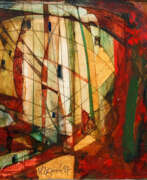

Ivan Ivanovich Chorny (Russian: Иван Иванович Чёрный) was a Soviet, Ukrainian and Russian artist of the second half of the twentieth and early twenty-first centuries. He was known for his monumental and decorative works in the style of socialist realism.
Ivan Chorny reoriented his style in the late 1990s, inventing a new technique and moving away from figurativeness in favor of abstract painting. His enigmatic compositions became an expressive expression of inner feelings enriched with colors and lines.
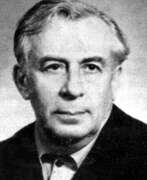

Isaac Aronovich Davidovich (Russian: Исаак Аронович Давидович) was a Soviet and Belarusian artist of Jewish origin of the second half of the twentieth century. He is known as a painter and graphic artist.
Isaac Davidovich worked in easel and monumental and decorative painting, as well as in easel and book graphics, he drew illustrations and posters. In the field of monumental art he created plafonds and panels.
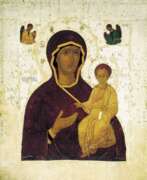

Dionisius, a distinguished Russian icon painter born around 1440, emerged as a pivotal figure in the Moscow school of icon painters, particularly towards the late 15th and early 16th centuries. His work is characterized by a unique style known as Muscovite mannerism, which features elongated figures, diminutive hands and feet, and serene, peaceful faces. Dionisius's artistry is most notably encapsulated in his comprehensive and best-preserved work, the fresco painting of the Virgin Nativity Cathedral at the Ferapontov Monastery, which stands out for its singularly pure and gentle colors, imbuing the scenes from the life of the Virgin with a solemn and festal mood.
Throughout his career, Dionisius enjoyed the patronage of many rich and notable figures, including Joseph of Volokolamsk, who commissioned him to paint over eighty icons for various cloisters. His first significant commission was for the Cathedral of the Dormition in the Moscow Kremlin in 1481. His Crucifixion icon, created in 1500, is particularly revered and showcases a novel approach to depicting this key scene in the Christian tradition, focusing on Jesus Christ, the Blessed Virgin Mary, and John the Theologian with an emphasis on suffering and redemption.
Dionisius's legacy extends beyond his own works to include several iconic panels attributed to him, showcasing various religious figures and scenes that profoundly influenced Russian art and iconography in the centuries that followed. His depictions often featured innovative elements, such as the personified Church and Synagogue, underscoring his significant impact on the development of Russian Orthodox art.
For collectors and experts in art and antiques, Dionisius's work represents a quintessential chapter in the history of Russian iconography, offering a deep well of cultural, historical, and artistic significance. To stay informed about new discoveries and auction events related to Dionisius's work, signing up for updates can offer valuable insights and opportunities to engage with this remarkable aspect of Russian heritage.
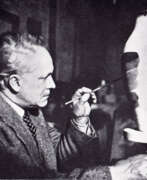

Raoul Dufy, a renowned French artist, is celebrated for his vibrant and decorative style, which left a significant mark in the realms of Fauvism and Post-Impressionism. Born in 1877 in Le Havre, France, Dufy's artistic journey was profoundly influenced by Henri Matisse's Fauvist work "Luxe, Calme et Volupté," which he encountered at the Salon des Indépendants in 1905. This experience steered him towards Fauvism, a style that emphasized bold contours and bright colors.
Dufy's artistic evolution saw him briefly embrace Cubism around 1920, after which he developed a unique approach. This approach, often referred to as stenographic, was characterized by skeletal structures, foreshortened perspectives, and the use of thin, quickly applied washes of color. His works, known for their cheerful and fashionably decorative nature, often depicted scenes of leisure like yachting, the French Riviera, and chic parties, capturing the essence of the period's optimism.
In addition to his painting, Dufy was also a commercial artist, illustrator, and designer, contributing significantly to textile design and public murals. His large-scale public art commissions combined modern and allegorical subjects with exuberant outlines and intense colors, showcasing a modernist take on traditional mural work. Notable works by Dufy include "The Regatta," "The Harvester," and the monumental "The Electricity Fairy," a large mural commissioned for the 1937 World's Fair in Paris.
His works are housed in prestigious public collections worldwide, including the Art Institute of Chicago, the Musée d'Art Moderne de Paris, and the National Gallery of Art in Washington, D.C. Despite his artistic achievements, Dufy's focus on decorative art and the lack of engagement with wider social concerns has led to a varied critical reception of his work. Nonetheless, his contribution to 20th-century art, particularly in popularizing a vibrant and illustrative style, remains undisputed.
If Raoul Dufy's artistry captivates you and you wish to stay informed about the latest artworks, exhibitions, and auction events related to this remarkable artist, we invite you to sign up for our updates. By subscribing, you'll receive timely notifications about new pieces for sale and upcoming auctions. This is a wonderful opportunity for collectors and art enthusiasts to enhance their appreciation and possibly their collections of Dufy's work. Stay connected with the world of art and don't miss any chance to acquire unique pieces by this celebrated artist.
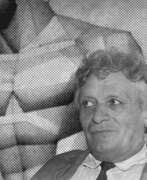

Valery Arutyunovich Geghamyan (Russian: Валерий Арутюнович Гегамян) was a Soviet and Ukrainian artist of the mid-twentieth century of Armenian origin. He is known as a painter, graphic artist and teacher.
Valeriy Geghamyan became famous for his monumental canvases, large thematic cycles and graphic series. He also created portraits, landscapes and still lifes. Since the early 1960s he lived and worked in Odessa and founded the art and graphic arts faculty at the Odessa Pedagogical Institute, where he taught for more than 20 years. The master raised many famous artists, some of whom are also teachers, passing on the experience of their teacher.
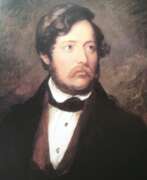

Franz Jakob Julius Götzenberger was a German painter of the first half of the 19th century. He is known as a muralist who specialized in chamber portraits and frescoes with mythological subjects.
Götzenberger spent most of his career in England, but also studied and worked in Rome and Naples. Together with other artists, he created frescoes at the University of Bonn and the church in Nierstein. The master is also known for his pencil portrait of the composer Frédéric Chopin. In 1847, he went to England, where he obtained citizenship and created many portraits and murals.
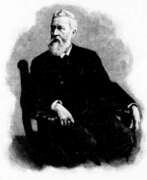

Gustav Graef was a German painter of the second half of the 19th century. He is known as a painter who specialized in historical and portrait painting.
Graef was commissioned early in his career to create murals for the New Museum in Berlin. One of his famous works was the giant monumental canvas "Charlemagne Adopts Vidukind". The artist also created scenes from the tales of Hercules and Theseus for the Old Museum in Berlin. Then in his genre paintings he moved from mythology to modern history. The master later concentrated on portrait painting, creating idealized female portraits that brought him commercial success. In 1880, at the height of his fame, Graef became a member of the Prussian Academy of Arts.


Oswaldo Guayasamín is an Ecuadorian painter, muralist and sculptor.
Oswaldo's father was an Indian, and the family was very poor, but the future artist was educated at the School of Fine Arts of Quito. Soon, literally in two years, he created a cycle of 103 paintings dedicated to the life of oppressed Indians in Latin America. Oswaldo Guayasamin also painted portraits of famous contemporaries, including Fidel Castro, whom he admired. He also created murals, frescoes, landscapes, and symbolic images.
The artist's works were exhibited in Paris, Moscow and in Leningrad, among other cities around the world, with amazing success. In 1957, at the Fourth Biennial in São Paulo, he was named the best South American artist.
Guayasamin was also a passionate collector. In 1978, the then famous artist donated to the State of Ecuador some 500 colonial paintings and sculptures, pre-Columbian archaeological sites, Goya and Picasso paintings that he had collected.
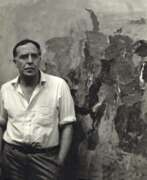

Philip Guston, born Phillip Goldstein, was a Canadian American artist, muralist, printmaker and draftsman. He was one of the most important exponents of abstract expressionism. He is considered a forerunner of the New Figurative Painting.
Philip Gaston was a member of the New York School, which included many representatives of abstract expressionism, such as Jackson Pollock and Willem De Kooning.
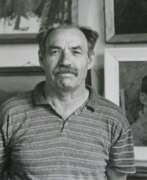

Theodor Theodorovich Herzen (Russian: Теодор Теодорович Герцен) was a Soviet and Kyrgyz artist of the second half of the twentieth and early twenty-first centuries of German origin. He is known as a painter, graphic artist, muralist, who was honored with the title of People's Artist of Kyrgyzstan.
Theodor Herzen worked in monumental and decorative art, easel painting and book graphics. One of Herzen's outstanding works was a monumental cycle of illustrations to the Kyrgyz epic "Manas", including more than two hundred linocuts. In this project, he combined his extensive experience of working on Kyrgyz themes with his deep knowledge of the ethnicity, history and spiritual traditions of the Kyrgyz people. Herzen collected extensive ethnographic material and created many sketches of costumes and scenes from Kyrgyz life for this cycle of illustrations.
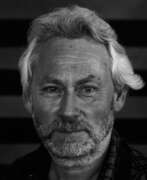

Donald Clarence Judd was an American artist associated with minimalism (a term he nonetheless stridently disavowed). In his work, Judd sought autonomy and clarity for the constructed object and the space created by it, ultimately achieving a rigorously democratic presentation without compositional hierarchy. He is generally considered the leading international exponent of "minimalism," and its most important theoretician through such writings as "Specific Objects" (1964). Judd voiced his unorthodox perception of minimalism in Arts Yearbook 8, where he says, "The new three dimensional work doesn't constitute a movement, school, or style. The common aspects are too general and too little common to define a movement. The differences are greater than the similarities."
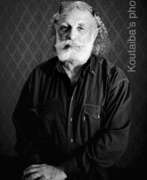

Nida Kadhim is an Iraqi sculptor, noted for producing a number of monumental works for Baghdad's city centre, some of which are still standing, while others were demolished or looted following the 2003 Iraqi invasion. Kadhim received his formal art education at Baghdad's Academy of Fine Arts in the 1950s. Actively involved in the Iraqi arts community, he became a founding member of the art group known as Al-Mujadidin (The Innovationists). His sculptures focus on grandiose busts and statues of leading figures taken from Iraq's history, or are based on other themes the artist considers worthy. His most well-known sculpture, which is still standing, is the Arab Woman in Zawra Park, Baghdad. It depicts an Arab woman holding a bouquet of flowers out to the new generation of Iraqis who are seeking a better future.
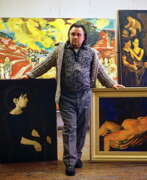

Alexander Mikhailovich Kishchenko (Russian: Александр Михайлович Кищенко) was a Soviet and Belarusian artist of the second half of the twentieth century. He is best known as a muralist painter.
Alexander Kishchenko is considered one of the most famous artists of Belarus of the 20th century, and his works are valuable assets of Belarusian culture. He worked in all genres of easel and monumental decorative painting and created hundreds of works during his career, including philosophical paintings and portraits. The artist was also proficient in mosaics, ceramics and tapestry.
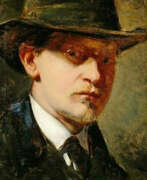

Louis Kolitz was a German painter of the second half of the nineteenth and early twentieth centuries. He is known as a painter who specialized in depicting historical events, battles, as well as portraits and landscapes.
Kolitz worked primarily in the portrait genre, but he also created monumental works, including murals for official buildings. His portraits and paintings were characterized by realism, detail and mastery of tone, which brought him popularity. Today, his work is recognized as more significant than just the landscape studies and Impressionist paintings of the 1870s. Although critics estimate that Kolitz may have been a pioneer and founder of German Impressionism, he only gained greater fame after his posthumous exhibition in Munich in 1920.
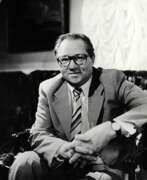

Yuri Konstantinovich Korolyov (Russian: Ю́рий Константи́нович Королёв) was a distinguished Soviet painter, monumental artist, and educator, renowned for his contributions to the art world. Born in 1929 and passing in 1992, Korolyov's career was marked by a profound dedication to the exploration of monumental and decorative compositions, painting, mosaics, and stained glass. His notable achievements include being honored as the People's Artist of the USSR in 1985 and serving as a corresponding member of the Academy of Arts of the USSR since 1983. Korolyov's influence extended beyond his artwork, as he was an esteemed professor at the Higher School of Industrial Art, where he shaped the minds of future artists, and notably held the position of Director at the Tretyakov Gallery from 1980 to 1992.
Korolyov's works are celebrated for their intricate detailing and profound thematic depth, capturing the essence of Soviet ideology through art. His masterpiece, "50 years of the USSR" in Tolyatti, created in 1981, stands as a testament to his skill in creating monumental art that resonates with historical significance and artistic beauty. This piece, among others, showcases Korolyov's mastery in blending artistic innovation with national pride, making his contributions invaluable to the Soviet art scene and beyond.
For art collectors and enthusiasts keen on exploring the works of a visionary who played a pivotal role in Soviet art history, Yuri Konstantinovich Korolyov's legacy offers a rich tapestry of cultural and artistic significance. His dedication to art education and his monumental contributions to the USSR's artistic heritage underscore the profound impact he had on the art world.
To stay updated on exhibitions and sales related to Yuri Konstantinovich Korolyov, signing up for updates is highly recommended. This subscription ensures that collectors and experts are informed about new opportunities to engage with Korolyov's enduring legacy, including upcoming auctions and events.
